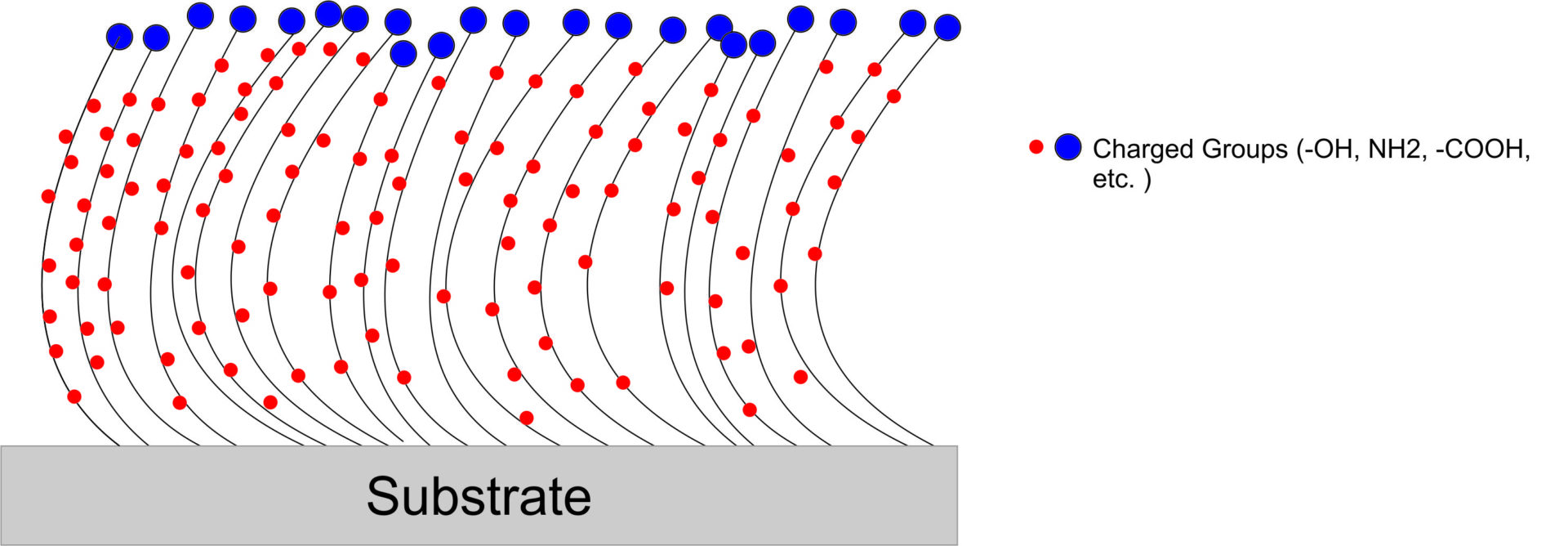Header image: schematic of a polymer brush interface.
Polyelectrolytes are charged polymers with special hydration properties. They are present in our bodies as sulfated glycosaminoglycans (e.g., chondroitin sulfate) and play an important role in lubrication and tissue homeostasis. Tissue engineering novelties are trying to bring the best out of the synthetic world, by mimicking the special properties of these electrolytes, grafted to all kinds of materials [1].
Kwon and Gong [2] studied the effect of negatively charged biomimetic polyelectrolytes for multiple applications, including low friction. Pavoor et al. [1] show the effects of the friction of grafting negatively poly(acrylic acid) and positively charged poly(allylamine hydrochloride) on ultra-high molecular weight polyethylene. Qin et al. [3] showed that the polydopamine-assisted immobilization of chitosan (net positive charge) can improve the biocompatibility and tribological properties of Cobalt Cromium implants. They demonstrated a tenfold decrease in the coefficient of friction upon brush-grafting.

This article was written by André Plath as part of an ongoing series of scientific communications written and curated by BioTrib’s Early Stage Researchers.
André is researching Boundary Lubrication of Fibrous Scaffolds at ETH Zürich, Switzerland.
References
[1] P.V. Pavoor, B.P. Gearing, O. Muratoglu, R.E. Cohen, A. Bellare, Wear reduction of orthopaedic bearing surfaces using polyelectrolyte multilayer nanocoatings, Biomaterials. 27 (2006) 1527–1533. https://doi.org/10.1016/j.biomaterials.2005.08.022.
[2] H.J. Kwon, J.P. Gong, Negatively charged polyelectrolyte gels as bio-tissue model system and for biomedical application, Current Opinion in Colloid & Interface Science. 11 (2006) 345–350. https://doi.org/10.1016/j.cocis.2006.09.006.
[3] L. Qin, H. Sun, M. Hafezi, Y. Zhang, Polydopamine-Assisted Immobilization of Chitosan Brushes on a Textured CoCrMo Alloy to Improve its Tribology and Biocompatibility, Materials. 12 (2019) 3014. https://doi.org/10.3390/ma12183014.

